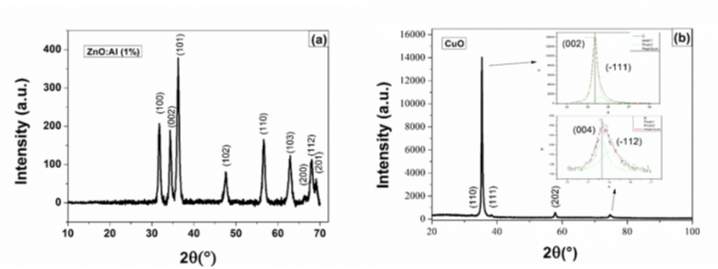


Indian Journal of Science and Technology
Year: 2020, Volume: 13, Issue: 27, Pages: 2786-2796
Original Article
A Agdad1, M Chaik1*, C M Samba Vall2, O Abounachit3, L Nkhaili1, A.El kissani1, H Ait Dads1, A Narjis1, A Outzourhit1
1Laboratory of Nanomaterials, Energy and Environment (LNEE), Faculty of Sciences Semlalia, Cadi Ayyad University, PO Box: 2390, Marrakech, 40000, Morocco. Tel.: +212658369094
2Laboratory of Renewable Energy and Environment, Faculty of Science Kenitra, Ibn Tofail University, POBox 133, Kenitra, Morocco
3LP2M2E, Laboratory of Process, Metrology and Materials for Energy and Environment, Faculty of Sciences and techniques Gueliz, Cadi Ayyad University, BP 549, Marrakech, Morocco
*Corresponding author
Tel.: +212658369094
Email: [email protected]
Received Date:09 June 2020, Accepted Date:14 July 2020, Published Date:31 July 2020
Objectives: The aim of this work is to fabricate and analyze the Aluminum Doped ZnO, Copper Oxide CuO and their heterojunction CuO/ZnO:Al using Spin Coating and Rf-Sputtering techniques. Methods: ZnO:Al was synthesized from a sol-gel precursor and deposited on Indium Tin Oxide-coated glass substrate ITO using spin coating. CuO thin films, on the other hand, were elaborated by RF-sputtering. The characterization of both thin films was performed by means of X-ray diffraction, scanning electron microscopy and UV-visible-NIR double beam spectrophotometer. The CuO/ZnO: Al heterojunction was fabricated and characterized using current voltage, capacitance-voltage and conductancevoltage measurements. Findings: The collected results confirm the rectifying nature of the junction with a built-in voltage Vbi of about 1.6 V.
Keywords: Copper oxide; Aluminum doped Zinc oxide; RF sputtering; spin coating; heterojunction
© 2020 Agdad, Chaik, Samba Vall, Abounachit, Nkhaili, kissani, Ait Dads, Narjis, Outzourhit. This is an open-access article distributed under the terms of the Creative Commons Attribution License, which permits unrestricted use, distribution, and reproduction in any medium, provided the original author and source are credited. Published By Indian Society for Education and Environment (iSee).
Subscribe now for latest articles and news.